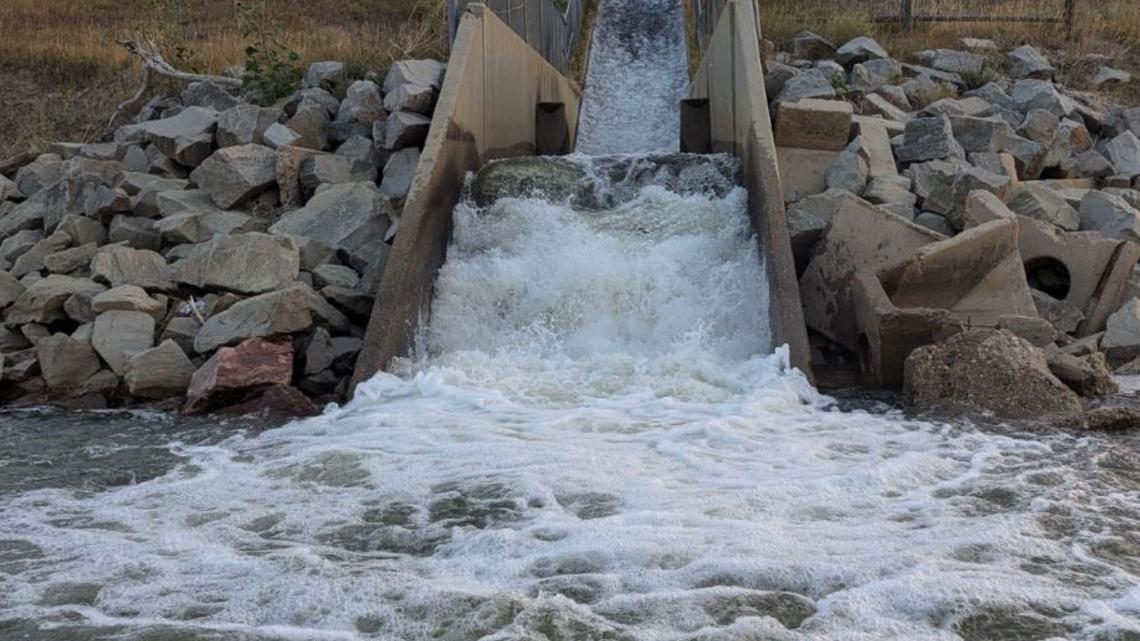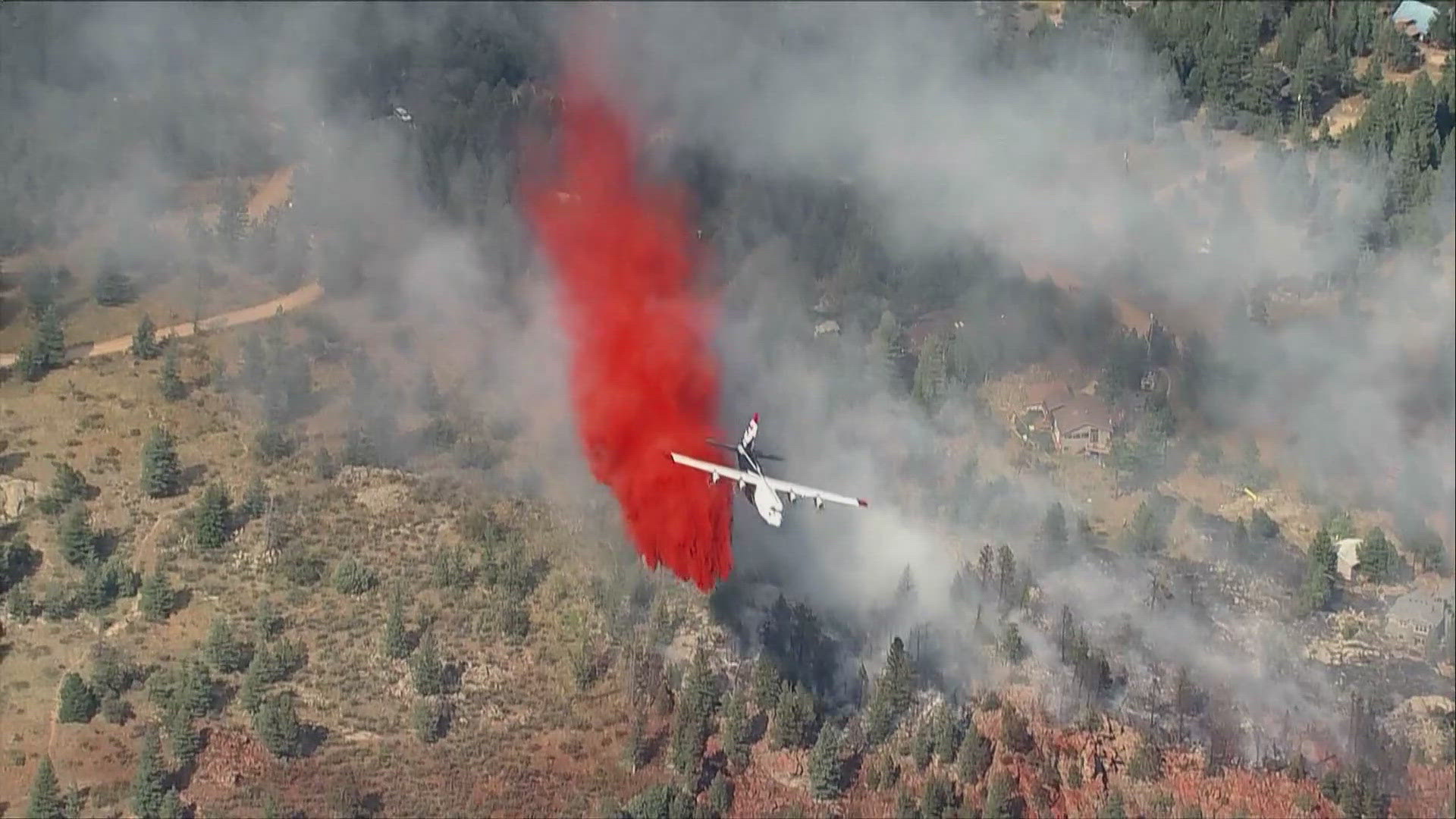BOULDER, Colo. — Fire retardant made its way into Boulder Reservoir on Tuesday while crews were battling the Stone Canyon Fire north of Boulder.
According to Boulder Parks and Recreation, the slurry was dropped into the St. Vrain Supply Canal, which flows into the Boulder Feeder Canal and then into Boulder Reservoir. As a result, slurry has entered the Boulder Reservoir. The slurry contains red dye, phosphorus and ammonia-based ingredients, which are not anticipated to pose a threat to human health.
The canal and reservoir are not currently being used as drinking water sources, so there is no risk to public health through the drinking water supply, officials said.
If there is a high enough slurry concentration in the water, residents who get into the reservoir might experience skin or eye irritation. The slurry has the potential to affect aquatic life and wildlife depending on concentrations.
Due to proximity to the canal inlet, the city advised against fishing and recommended that Boulder Reservoir visitors keep their dogs out of the water on the reservoir’s north shore.
City of Boulder staff are testing water quality in the reservoir to evaluate impacts over the coming days. The volume of slurry is estimated to be less than 0.001% of the total reservoir volume. At this level of dilution, it is very unlikely to see human health impacts.


City staff are also evaluating water conditions but don’t anticipate making additional adjustments to recreation operations with lake and swim beach operations continuing as programmed.
Dr. Lauren Magliozzi, a PhD candidate at the University of Colorado Boulder, is studying the impact of fire on water systems and other ecology in the wildland-urban interface.
"A lot of folks don’t think about how fire impacts water," she said. "There's a really important relationship there. In wildland systems, fires can help streams. They can put small pulses of nutrients and help bio-geocycling. But when we get these really intense blazes, we're making our water systems more vulnerable and we're sort of creating this situation where were worried about water resources."
Sometimes, that can look like sediment or debris flowing into rivers and streams.
"Wildland fires release a lot of sediment into the stream by destabilizing the stream banks and burning vegetation. This vegetation has roots that holds streambanks together," Magliozzi explained. "When we remove that, we get huge pulses of sediment. That can clog the distribution system in our drinking water. It also can affect water clarity that can prevent photosynthesis from occurring for algae already in the stream.
Other times, problems can occur from chemicals that burned or were released as part of firefighter efforts. That includes the stuff inside fire retardant slurry, like ammonia and phosphorus, that drop or runoff into streams or reservoirs.
"At really high concentrations, it can stimulate so much algae growth that at night, when algae is respiring, using the glucose it made all day, it uses up oxygen in water. It can deplete dissolved oxygen in water. Also, as that algae starts to die, microorganisms feed on that decaying biomass and that further depletes oxygen dissolved in water," she explained. "This can lead to fish kills [because] if there's so little oxygen left, fish start to suffocate. It can also cause species composition in water and lead to harmful algae blooms in serious cases."
Again, the City of Boulder says the amount of slurry in the Boulder Reservoir remains very low and is diluted enough they don't believe it's causing any impacts to water quality.
"At these low concentrations, they're just not really worried about stimulating so much algae growth that its going to be a concern," Magliozzi added.

